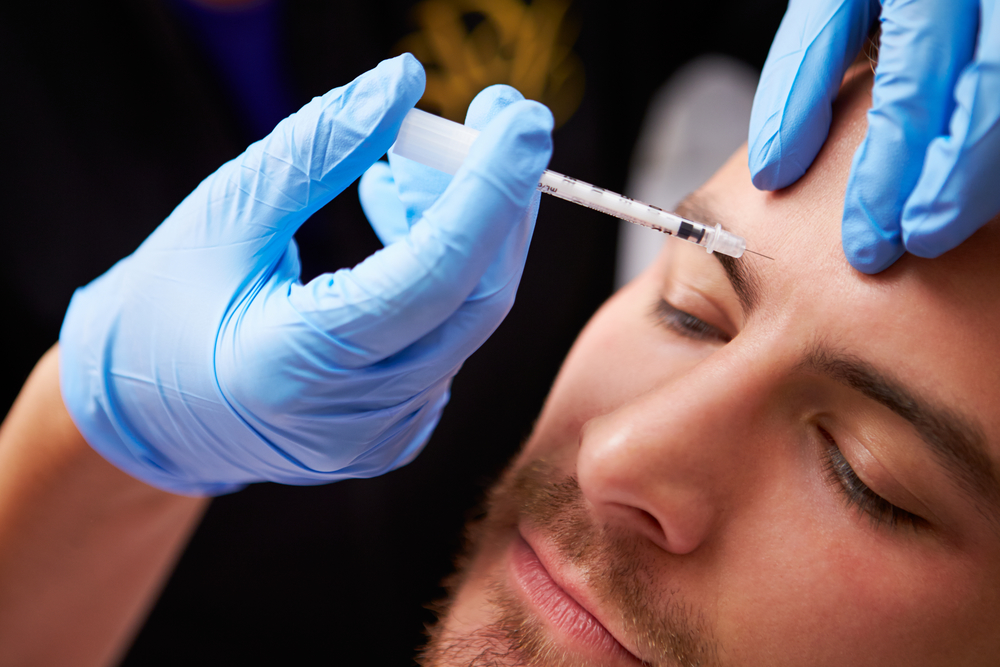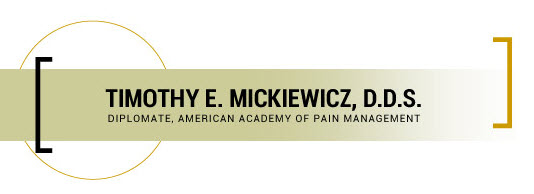
Jaw pain, chronic headaches, facial pain … these are all issues that can be corrected using BOTOX®. While this treatment has been used for decades in helping men and women reduce wrinkles and other signs of aging, a growing number of dental professionals, including myself, are now offering this conservative treatment for pain management in oral and maxillofacial therapeutic cases.
BOTOX® prevents the release of acetylcholine at the neuromuscular junction. Acetylcholine, a natural occurring chemical in the body, is responsible for muscle contraction. By injecting BOTOX® into the underlying muscles responsible for the origin of pain, the intensity of the contracting muscle is reduced or completely eliminated, depending on the dosage injected. Essentially, BOTOX® paralyzes the muscle for up to three months before new acetylcholine receptors develop and the muscle contractions return to full function.
While cosmetic surgeons use BOTOX® for preventing the contraction of muscles known for causing lines and crevices in the face, when used properly, it can also be used for pain management in a number of dental procedures.
What Is BOTOX®?
Also known as botulinum toxin, BOTOX® is a highly purified protein derived from Clostridium botulinum bacterium. A skilled and trained physician can only use this prescription medication. BOTOX® is injected directly into the skin’s underlying tissues to block communication between the nerves and muscles. BOTOX® was first approved by the FDA in 2002 to reverse the signs of aging. But after extensive research, it was found effective in treating migraines, facial pain, and jaw tension caused by TMD and bruxism, and was approved in 2010 for this purpose. BOTOX® immediately relaxes the jaw’s surrounding muscles and alleviates pain.
TMD
Temporomandibular joint disorder (TMD) affects the hinge joints that connect your lower and upper jaw. These joints are located on either side of the skull in front of the ear and necessary for proper and fluid jaw movement. When the joints are irritated or inflamed as a result of trauma, arthritis, malocclusion, or stress, it can cause pain, tension, and the surrounding muscles to spasm. Some of the most common symptoms include:
- Jaw, ear, and facial pain
- Facial swelling
- Difficulty chewing, talking, or yawning
- Lockjaw (inability to open/close jaw effectively)
- Popping or clicking sound when opening/closing jaw
Customized oral devices, orthodontics, and oral surgery are all proven treatments used in my office to help correct TMD. However, when the muscles are in spasm, patients can still experience ongoing pain even when undergoing one of the above treatments. By using BOTOX® as a trigger point injection beforehand, it can relieve the intensity of the muscle contraction that is in spasm, allowing us to achieve the proper occlusal equilibration.
BOTOX® can be injected into a number of muscles responsible for facial expression and mastication, including the temporalis, masseter, frontalis, corrugator, procerus orbicularis oris, orbicularis oculi, depressor anguli oris, mentalis, and pterygoid muscles.
BRUXISM
Bruxism is a term used to described teeth grinding and jaw clenching. Although this poor oral health habit generally occurs during the night while you sleep, it can also occur during stressful moments at work, at home, or in the car during traffic. It can emerge as a result of TMD, malocclusion, sleep apnea, or even anxiety. No matter the cause, when bruxism is left unaddressed, it can exacerbate gum disease and TMD, and lead to the destruction of proper dentition. Patients who have bruxism often experience:
- Migraines or chronic headaches, especially when waking
- Tight and sore jaw muscles
- Difficulty opening/closing jaw
- Ongoing jaw pain
- Facial swelling
- Cracked or damaged molars
- Broken dental fillings
Customized oral appliances are often prescribed to alleviate jaw pain and protect back molars from wearing down. Just as with TMD, BOTOX® can be used to alleviate tense muscles resulting in pain and involuntary muscle contractions. Injecting bilateral BOTOX® injections into the temporalis and masseter muscles can effectively treat bruxism. The key to successful treatment is selecting a skilled medical professional knowledgeable in administering the proper dosages. Too high of a dosage could interfere with the patient’s ability to effectively chew and talk. Too low of a dosage could have little to no effect. When the proper dosage is administered, it can significantly reduce jaw and facial pain, migraines, and loosen the muscles responsible for chewing, eating, and speaking.
MIGRAINES
Migraine headaches are different than sinus or tension headaches. With migraines, the pain is not only unbearable, but debilitating. They are often accompanied by nausea, dizziness, sensitivity to light, face and neck pain, and can last anywhere from a few hours to several days. Migraines can affect your work, relationships, and prevent you from enjoying a good quality of life. Migraine triggers differ amongst patients. While some may be triggered by sounds, smells, foods, stress, or environmental factors – the cause of your migraine may be the result of a dental issue, such as TMD or teeth grinding. By injecting BOTOX® into the surrounding jaw muscles every 12 weeks, it can prevent migraines before they even start. Most patients begin to notice effects after two to three treatments.
BOTOX® is a conservative, minimally invasive, and relatively painless procedure for pain management as it relates to dental, facial, and head and neck areas. Injections take about 15 minutes to administer and results can last anywhere from three to six months, depending on the severity of your issue. The safety of this prescription medication is well known because of its temporary effect and the fact that it is completely reversible. It gives the patient and dental professional the option to discontinue treatment and return to the former condition with no side effects.
About the Author: Dr. Mickiewicz owns a private practice in Sacramento and lectures across the nation on TMD treatments. He is a diplomate of the American Academy of Pain Management and holds membership in many professional associations for dentistry, sleep medicine, and TMD. In addition, Dr. Mick, as his patients call him, founded Pacific Orofacial Pain Consultants, a team of experts in various disciplines, who tackle the issue of TMD pain and treatment, to help sufferers find relief from chronic pain. To talk with Dr. Mick, call his Sacramento dental office at 916-457-7710.


